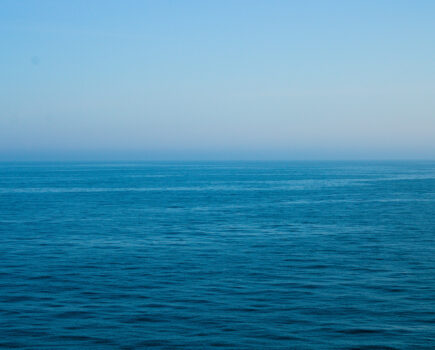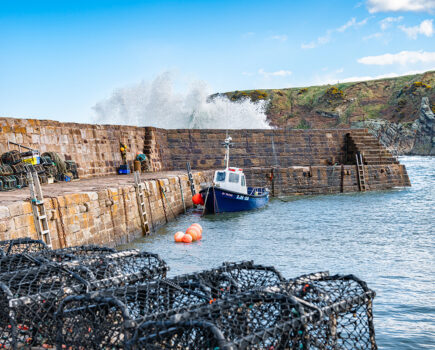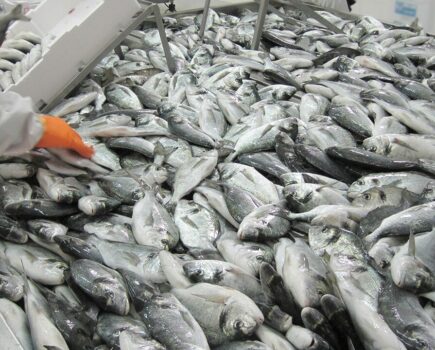VMS and cameras for Scots under-12m fleet
Scallopers first to be fitted with electronic kit
Installation of remote electronic monitoring (REM) equipment on Scottish inshore vessels will begin with scallop vessels in Shetland in April, reports Tim Oliver.
REM monitoring and VMS tracking of under-12m vessels in inshore waters is part of a package of measures announced by Marine Scotland to protect Scotland’s inshore fleet.
Scottish fisheries minister Fergus Ewing said there are two basic systems – the tracking device and the television equipment to film what happens. The very smallest vessels will have a tracking device, but they will probably not have a camera device. This will be discussed further, ‘but we have to be proportionate’, said the minister.
Marine Scotland said that the programme will help to establish local fisheries management arrangements and empower local fishers and their coastal communities.
New regulations will also be introduced for marking creels, to reduce the use of plastic items that can become detached and create marine litter. This will be implemented via a Scottish statutory instrument to be laid in the Scottish parliament this spring.
Other measures to enhance inshore fisheries include:
- Establishment of an Inner Sound local fisheries advisory group to better manage the waters east of Skye and Raasay
- A new website to allow fishers to better interact with their local regional inshore fisheries group – rifg.scot – which will go live in March
- Continuing work to reduce gear conflict and better manage disagreements between fishers.
New chairs have been appointed to the mainland regional inshore fisheries groups. Jennifer Mouat and Simon Macdonald will be chairs of the North and East and the West groups respectively.
Technology to support the new monitoring programme will be installed by Woodsons of Aberdeen.
Explaining details of the project to MSPs, Fergus Ewing said that 20 of 114 inshore scallop dredgers already have the tracking and monitoring equipment, and Marine Scotland hopes to complete the installations on the rest of the scallopers by the end of the year.
From Shetland, the contractors will move to the Hebrides, and then to the west coast. The contractors’ work will include checking that the data is being transmitted correctly from vessels to Marine Scotland and can be monitored properly, as well as training fishermen in its use.
Pointing out that 80% of the more than 2,000 Scottish-registered vessels operate in inshore waters, Fergus Ewing said that the installation of REM would mean that the authorities will know where vessels are and what they are doing.
“Until now, because evidence could not be provided, it has been almost impossible to resolve disagreements that arose because of disputed facts – claims and counterclaims about matters such as where vessels were, or whether they were fishing in the wrong places, or where other vessels’ creels were located. REM provides an opportunity to change that,” Fergus Ewing told MSPs.
He said it should not be assumed that fishermen deliberately damage marine features, and stressed that while the Scottish government ‘takes very seriously’ any incidents in which damage occurs, ‘the vast majority of fishers fully respect the marine environment’. “After all, it is the source of their livelihood, and that of their successors for decades and centuries to come.”
He said that a key objective of the Scottish Inshore Fisheries Strategy 2015 was to more effectively monitor fishing in inshore waters. “That will provide vital data for government to manage fishing resources, reassurance to local communities about fishing activity, and information for fishers to guide how, when and what they fish.”
He welcomed the dialogue on inshore management that had been evident in the inshore fisheries pilot programme. The Mull spatial separation trial conflict had been successfully mitigated, he said, and the lessons learned from it would be applied to the Outer Hebrides pilot, where the prototype low-cost vessel tracking solution would continue to be developed.
Less progress had been made with the Inner Sound inshore pilot, and an Inner Sound fisheries management advisory group was being established to open up dialogue between the range of interests in the area.
He said that there was conflict between fishermen in only a minority of cases, but when it occurred, ‘it can be difficult and intense, and it can cause economic loss and hardship to many small businesses’. REM would enable ‘substantial further progress in resolving some of the conflicts, or preventing them from arising in the first place’.
Fergus Ewing said that fishermen around the coast were concerned about wind farm development, and that the government was ‘well aware of the issue’. Steps had been taken to ensure there is co-operation and discussion with offshore wind developers, so that their plans took account of the needs of fishing. “After all, fishers were there first,” said the minister.
Vessel monitoring systems (VMS) using satellite technology have been used by all over-15m EU vessels since 2003. In 2013, VMS using satellite and mobile phone options was introduced in the UK for over-12m vessels.
Inshore VMS differs from VMS because it transmits data that can be accessed by mobile phones, rather than the satellite technology used by larger vessels. It is simpler, and therefore lower-cost.








